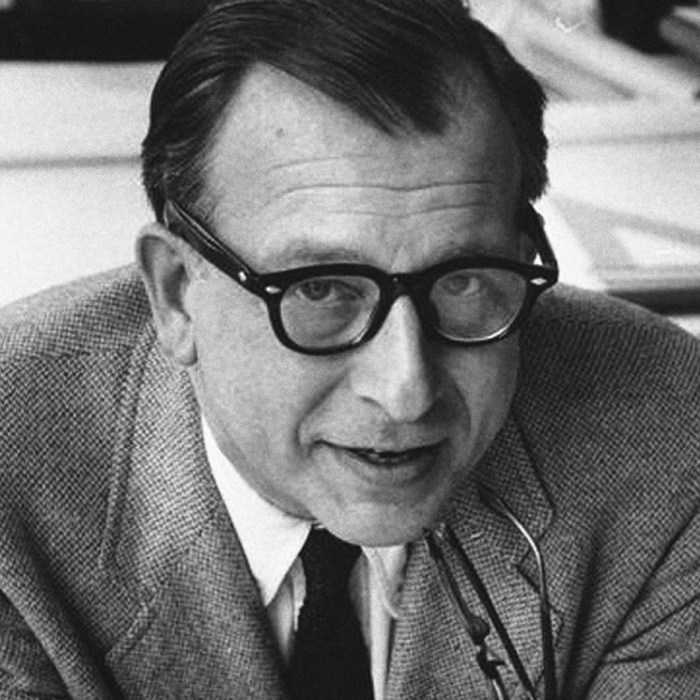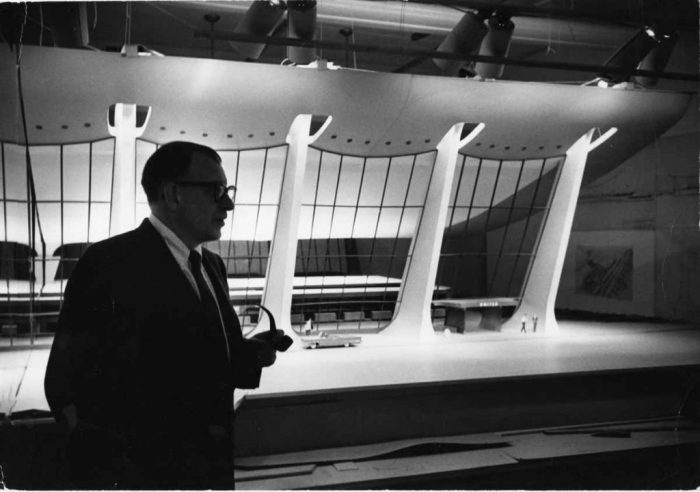Exploring the Legacy of Saarinen: A Dive into the Architects Life and Impact
Embark on a journey delving into the world of Eero Saarinen, a visionary architect whose innovative designs continue to shape modern architecture. From iconic structures to groundbreaking philosophies, Saarinen's influence is profound and everlasting.
Saarinen’s Background

Eero Saarinen, born in 1910 in Finland, was a renowned architect known for his innovative and visionary designs that shaped the landscape of modern architecture. He moved to the United States with his family at a young age and later studied architecture at Yale University.Saarinen's unique approach to design combined modernist principles with sculptural forms, creating iconic structures that still stand as testaments to his creativity and vision.
His work was not only influential during his time but continues to inspire architects and designers to this day.
Significant Architectural Projects
- The Gateway Arch in St. Louis, Missouri: A symbol of the westward expansion of the United States, this stainless steel arch stands at 630 feet tall and is one of Saarinen's most recognizable works.
- TWA Flight Center at John F. Kennedy International Airport: Known for its futuristic design and innovative use of concrete and glass, this terminal redefined airport architecture.
- Miller House in Columbus, Indiana: A prime example of Saarinen's residential designs, this house showcases his ability to seamlessly blend architecture with nature.
Impact on Modern Architecture
Saarinen's work had a profound impact on modern architecture, pushing boundaries and challenging conventions. His designs were not just buildings but expressions of art and innovation that captured the spirit of their time. Through his use of new materials, bold forms, and attention to detail, Saarinen paved the way for future generations of architects to think outside the box and create spaces that inspire and delight.
Saarinen’s Design Style
Eero Saarinen's design style is characterized by a blend of modernist principles with a focus on form, function, and innovation. Known for his sculptural approach to architecture, Saarinen created buildings and structures that were not only aesthetically pleasing but also functional and forward-thinking.
Comparison with Other Architects
Saarinen's design approach can be compared to other prominent architects of his time, such as Le Corbusier and Mies van der Rohe. While Le Corbusier focused on the idea of the "machine for living," Saarinen emphasized the human experience and interaction with space.
Mies van der Rohe, on the other hand, was known for his minimalist approach, while Saarinen incorporated more organic and expressive forms in his designs.
Influence on Contemporary Architecture
Saarinen's design style has had a significant impact on contemporary architecture, inspiring architects to think beyond traditional boundaries and experiment with new forms and materials. His iconic works, such as the TWA Flight Center at JFK Airport and the Gateway Arch in St.
Louis, continue to influence architects around the world, pushing the boundaries of design and innovation.
Iconic Structures by Saarinen

Eero Saarinen's architectural legacy includes several iconic structures that showcase his innovative design approach and unique style.
TWA Flight Center at JFK Airport
The TWA Flight Center at JFK Airport in New York is one of Saarinen's most famous works. Completed in 1962, this futuristic building features a striking wing-shaped roof and expansive windows that flood the interior with natural light. The terminal's design reflects the optimism and excitement of the Jet Age, with its sleek curves and modernist aesthetic.
The TWA Flight Center was designated a New York City Landmark in 1994 and is considered a masterpiece of mid-century modern architecture.
Gateway Arch in St. Louis
Another iconic structure designed by Saarinen is the Gateway Arch in St. Louis, Missouri. Completed in 1965, this stainless steel monument stands as a symbol of America's westward expansion. The Arch's elegant curve and monumental scale make it a distinctive landmark on the St.
Louis skyline. Saarinen's vision for the Gateway Arch was to create a timeless and monumental structure that would inspire awe and admiration. The Gateway Arch is now a National Historic Landmark and a must-see destination for visitors to St. Louis.
Saarinen’s Design Philosophy
Eero Saarinen's design philosophy was deeply rooted in his belief in the harmonious blend of architecture and sculpture. He strived to create buildings that not only served a functional purpose but also stood as works of art in their own right, seamlessly integrating form and function.
Blending Architecture and Sculpture
Saarinen's approach to blending architecture and sculpture can be seen in his iconic structures such as the TWA Flight Center at JFK Airport. The fluid lines and organic shapes of the building reflect his vision of architecture as a sculptural form.
By incorporating sculptural elements into his designs, Saarinen created spaces that were not only visually striking but also emotionally engaging.
Reflecting the Spirit of His Era
Saarinen's design philosophy was a reflection of the spirit of his era, characterized by a sense of optimism, innovation, and experimentation. His use of innovative materials and construction techniques, such as the use of reinforced concrete in the construction of the Gateway Arch in St.
Louis, showcased his forward-thinking approach to architecture. Saarinen's designs captured the essence of the mid-20th century, a time marked by rapid technological advancements and a growing fascination with the future.
Innovative Techniques
Saarinen's architectural creations were characterized by the use of innovative techniques that pushed the boundaries of traditional design. His use of thin-shell concrete structures, as seen in the Kresge Auditorium at MIT, demonstrated his ability to create bold and daring architectural forms.
Saarinen's experimentation with new materials and construction methods paved the way for a new era of architectural expression, inspiring future generations of architects to think outside the box.
Outcome Summary

As we wrap up our exploration of Saarinen's legacy, it's clear that his contributions have left an indelible mark on the architectural landscape. The fusion of art and functionality in his work serves as a timeless inspiration for future generations of architects.
FAQ Section
What were some of Saarinen's most significant architectural projects?
Some of Saarinen's notable projects include the TWA Flight Center at JFK Airport and the Gateway Arch in St. Louis.
How did Saarinen blend architecture and sculpture in his design philosophy?
Saarinen's approach involved integrating sculptural elements into architectural forms, creating a seamless fusion of art and functionality.
What sets Saarinen's design style apart from his contemporaries?
Saarinen's design style is characterized by its innovative use of materials, sleek curves, and harmonious blend of form and function.




